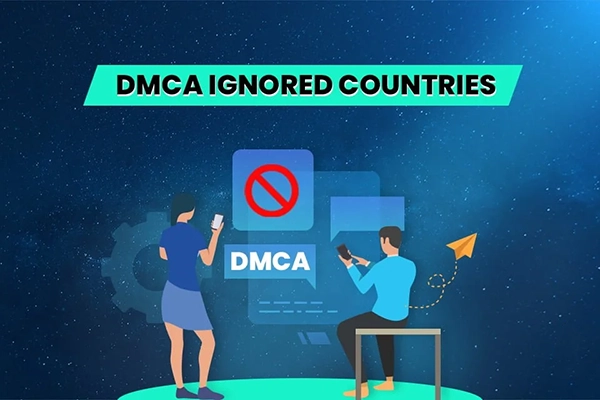欧博娱乐Installing and Configuring WordPress: A Step
A technical guide for web developers, system administrators, and hosting providers on installing and configuring WordPress, covering best practices for performance, security, and scalability.
Table Of Content:
WordPress, the ubiquitous content management system (CMS), powers a significant portion of the web. While known for its user-friendliness, setting up WordPress for optimal performance and security requires a deeper understanding of web server technologies and best practices. This guide is tailored for experienced users like web developers, system administrators, and hosting providers seeking a streamlined approach to WordPress installation and configuration.
Prerequisites
Visit the official WordPress website (https://wordpress.org/) and download the latest version of WordPress.
Extract the downloaded ZIP file to a directory of your choice on your computer.
Step 2: Create a Database and UserAccess your web hosting control panel (cPanel, Plesk, etc.).
Locate the MySQL Databases section or equivalent.
Create a new database specifically for your WordPress installation.
Create a new database user and assign it all privileges to the newly created database. Note down the database name, username, and password for later use.
Step 3: Upload WordPress FilesYou can choose to upload the WordPress files using either an FTP client or your hosting provider's file manager.
FTP Method:
Connect to your web server via FTP using the credentials provided by your hosting provider.
Upload the contents of the extracted WordPress folder to the desired directory on your server (e.g., the root directory for your domain, usually 'public_html' or 'www').
File Manager Method:
Access the File Manager tool in your hosting control panel.
Navigate to the directory where you want to install WordPress.
Upload the extracted WordPress ZIP file and use the file manager's extract function to unzip it.
Step 4: Run the WordPress Installation ScriptOpen your web browser and navigate to your domain name. You should be redirected to the WordPress installation setup.
Select your preferred language and click 'Continue'.
On the next screen, you'll be asked for your database connection details. Enter the database name, username, and password you created earlier. The database host is usually 'localhost' unless specified otherwise by your hosting provider.
Click 'Submit'. If the details are correct, WordPress will connect to your database and display a success message.
Click 'Run the Install'.
Step 5: Configure WordPress SettingsProvide your website title, desired username and password for your WordPress administrator account, and your email address.
Choose your preferred privacy settings. For public websites, it's generally recommended to keep 'Discourage search engines from indexing this site' unchecked.
Click 'Install WordPress'.
Step 6: Secure Your WordPress InstallationSecurity should be paramount. Immediately after installation:
Change Default Admin Username: Do not use 'admin' as your username. Create a new administrator account with a strong, unique username and password, and delete the default 'admin' account.
Enable Two-Factor Authentication: Enhance login security by requiring a second authentication factor, such as a code from an authentication app.
Update Regularly: Keep WordPress, themes, and plugins up-to-date to patch security vulnerabilities.
Implement Security Plugins: Consider reputable security plugins for additional layers of protection (e.g., Wordfence, Sucuri Security).

Now the fun begins! Explore the following:
Choose a Theme: Select a theme that aligns with your website's design and functionality from the official WordPress theme repository or reputable third-party providers.
Install Plugins: Extend WordPress functionality with plugins for contact forms, SEO optimization, performance enhancements, and more.
Create Content: Start adding your website's content, including pages, posts, and media.
Advanced Configuration for Experienced UsersFine-tune your WordPress installation for optimal performance and security:
Caching: Implement caching mechanisms using plugins like WP Super Cache or W3 Total Cache to reduce server load and improve website speed.
Content Delivery Network (CDN): Utilize a CDN to distribute your website's content globally, reducing latency for visitors in different geographic locations.
Database Optimization: Regularly optimize your WordPress database using plugins like WP-Optimize to improve performance.
Security Hardening: Implement additional security measures like limiting login attempts, hiding the WordPress version, and disabling file editing from the dashboard.
Published: 20 August 2024 03:14
Previous article
What is a DNS Record? The 6 Most common types of DNS Records
Next article
Choosing the Perfect WordPress Theme for Your Website: Considerations for Design, Functionality, SEO, and User Experience
RELATED ARTICLES

Configuring SPF, DKIM, and DMARC Records for Enhanced Email Deliverability and Security
A technical guide for experienced webmasters, hosting providers, and system administrators on setting up SPF, DKIM, and DMARC to improve email deliverability and protect against spoofing.

Comparative Analysis of Popular Web Hosting Control Panels
Delve into a comprehensive comparison of leading web hosting control panels, focusing on their advanced features, nuanced differences, and suitability for experienced webmasters, system administrators, and hosting veterans. This exploration will empower you to make informed decisions for streamlined website management.

How to create an email account in DirectAdmin
DirectAdmin is a web hosting control panel, so creating an email account there involves logging into your hosting provider's interface. Here's how to create an email account in DirectAdmin.
![]()
User Behavior with Advanced Website Analytics and Heatmap Tracking
Dive deep into advanced website analytics and heatmap tracking to understand user behavior on your website. This guide is tailored for experienced web professionals, webmasters, and system administrators looking to optimize their websites for conversions.
News Last Update

Shared vs. VPS vs. Cloud Hosting: Don't Choose Until You've Read This
Choosing the wrong web hosting is like building a skyscraper on a foundation of sand. It might look fine at first, but it's destined to crumble under pressure. Your hosting decision is one of the most critical infrastructure choices you'll make for your online presence, directly impacting your site's speed, security, and ability to grow.

The 5-Minute Guide to Web Hosting: Everything a Beginner Needs to Know
You’ve designed the perfect website. It has stunning visuals, compelling copy, and a flawless user experience... but it’s stuck on your computer. How do you move it from your local drive to the live internet for the world to see? The answer lies in a service that powers nearly every site you visit, yet remains a mystery to many: web hosting.

Stop Overpaying for Bad Hosting: Our Mission to Find You the Perfect Host
Is your hosting bill creeping up while your site speed crawls down? You're not alone, and you're probably overpaying for a service that's actively holding your business back. The cheap introductory offer that lured you in has likely ballooned into an expensive, underperforming liability. It's a frustrating cycle, but breaking it is the first step toward unlocking your website's true potential.

DMCA Ignored Countries in 2025: In-Depth Analysis
The Digital Millennium Copyright Act (DMCA), enacted in the United States in 1998, serves as a cornerstone of intellectual property protection in the digital age. However, its jurisdictional reach is confined to the U.S., leaving a patchwork of enforcement challenges in the global landscape. Certain countries exhibit weak adherence or outright disregard for DMCA takedown notices, creating havens for website operators seeking to host copyrighted material without fear of immediate legal repercussions.

Top 10 best website hosting services of 2025
If you’ve ever spent time choosing a web host, you know how prolonged a task it can be. With so many web hosting options out there, finding the right one when you create a website can take time. Ultimately it comes down to what type of hosting you need, the specific features you want and your budget. And even then, it can still be hard to decide.
Web Hosting Services

2.5
HD.net.nz

4.1
XILO

4.2
Layer2Networks, LLC

4.1
Skyberate Internet Services B.V.
